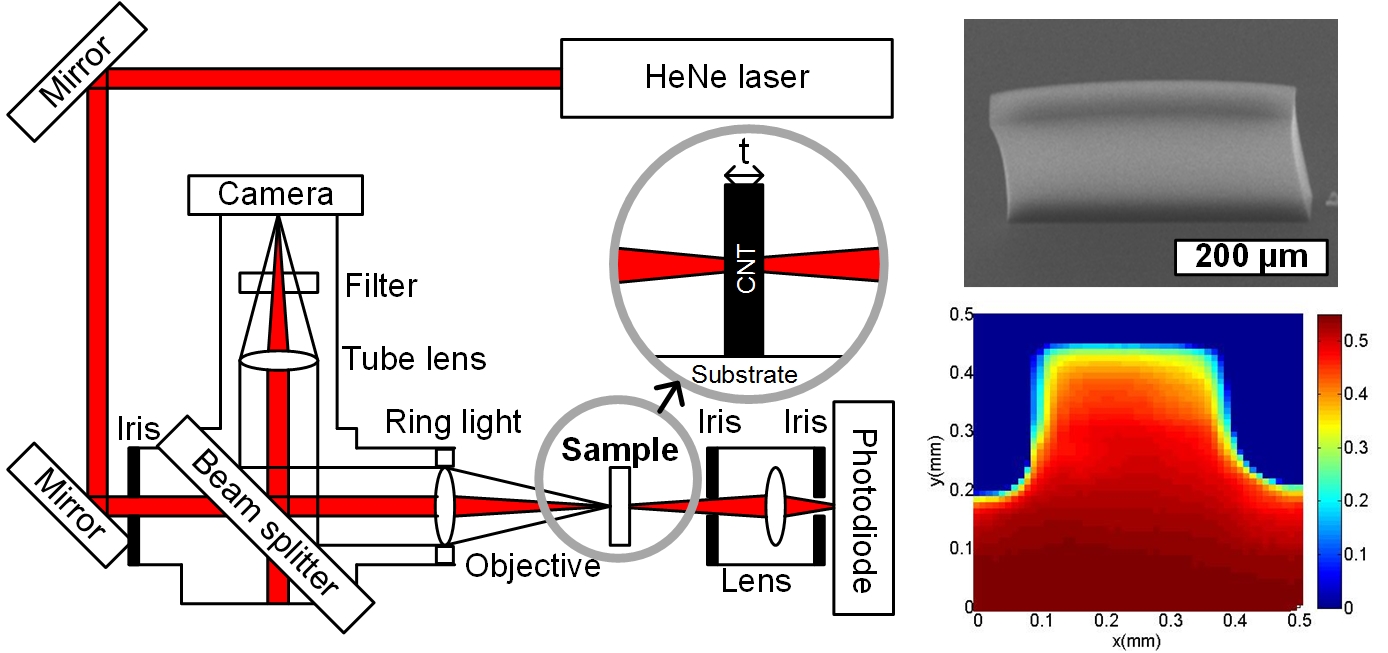
Year
2013Volume
15Pages
11511-11519Abstract
Engineering the density of carbon nanotube (CNT) forest microstructures is vital to applications such as electrical interconnects, micro-contact probes, and thermal interface materials. For CNT forests on centimeter-scale substrates, weight and volume can be used to calculate density. However, this is not suitable for smaller samples, including individual microstructures, and moreover does not enable mapping of spatial density variations within the forest. We demonstrate that the relative mass density of individual CNT microstructures can be measured by optical attenuation, with spatial resolution equaling the size of the focused spot. For this, a custom optical setup was built to measure the transmission of a focused laser beam through CNT microstructures. The transmittance was correlated with the thickness of the CNT microstructures by Beer–Lambert–Bouguer law to calculate the attenuation coefficient. We reveal that the density of CNT microstructures grown by CVD can depend on their size, and that the overall density of arrays of microstructures is affected significantly by run-to-run process variations. Further, we use the technique to quantify the change in CNT microstructure density due to capillary densification. This is a useful and accessible metrology technique for CNTs in future microfabrication processes, and will enable direct correlation of density to important properties such as stiffness and electrical conductivity.






